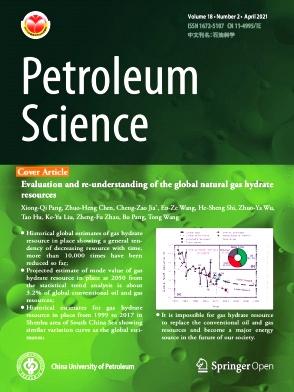Experimental study of EOR mechanisms of non-chemical CO2 microbubbles and their impact on pore structures
IF 6
1区 工程技术
Q2 ENERGY & FUELS
引用次数: 0
Abstract
Non-chemical CO2 microbubbles as a mobility control technology in enhanced oil recovery (EOR) and carbon sequestration are becoming attractive. In this study, the EOR mechanisms of non-chemical CO2 microbubble (MB) in low permeability reservoirs are experimentally investigated by the nuclear magnetic resonance (NMR) technology. This study reveals, for the first time, the EOR mechanisms of MB in a heterogeneous reservoir and its effect on pore structure. First, mobility reduction factors of MB with various gas–liquid ratios were determined, with MB at a gas–liquid ratio of 1 exhibiting the best performance under experimental conditions. Second, the coreflood experiments with NMR scanning were performed to reveal the EOR mechanisms of MB. It was observed that MB achieved an incremental oil recovery of 13.49% and 22.80% in the core sample with a permeability of 9.51 × 10−3 and 2.23 × 10−3 μm2, respectively. Benefiting from MB's conformance control, the total oil recovery was increased from 38.34% to 54.57% of original oil in place by MB in parallel core flood experiments. Third, the NMR tests demonstrated that MB significantly reduced residual oil in core samples, especially in small pore areas, which highlights the improvement of sweep efficiency by MB. Lastly, the effect of MB on pore structure was studied. The NMR tests indicated a significant increase in pore space after 1 pore volume of MB flooding. Minerals in the core sample were dissolved, leading to an increase in permeability and porosity of the core sample by 17.01% and 0.31%, respectively. Overall, the results of this study provide valuable insights into the EOR mechanisms of MB at the pore scale and offer implications for EOR and carbon sequestration in low-permeability reservoirs.
求助全文
约1分钟内获得全文
求助全文
来源期刊

Petroleum Science
地学-地球化学与地球物理
CiteScore
7.70
自引率
16.10%
发文量
311
审稿时长
63 days
期刊介绍:
Petroleum Science is the only English journal in China on petroleum science and technology that is intended for professionals engaged in petroleum science research and technical applications all over the world, as well as the managerial personnel of oil companies. It covers petroleum geology, petroleum geophysics, petroleum engineering, petrochemistry & chemical engineering, petroleum mechanics, and economic management. It aims to introduce the latest results in oil industry research in China, promote cooperation in petroleum science research between China and the rest of the world, and build a bridge for scientific communication between China and the world.
 求助内容:
求助内容: 应助结果提醒方式:
应助结果提醒方式:


